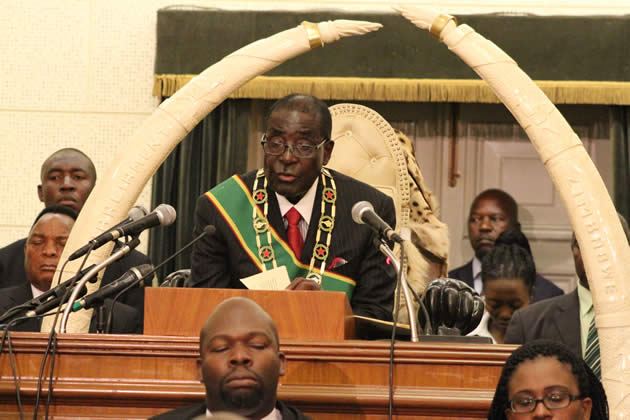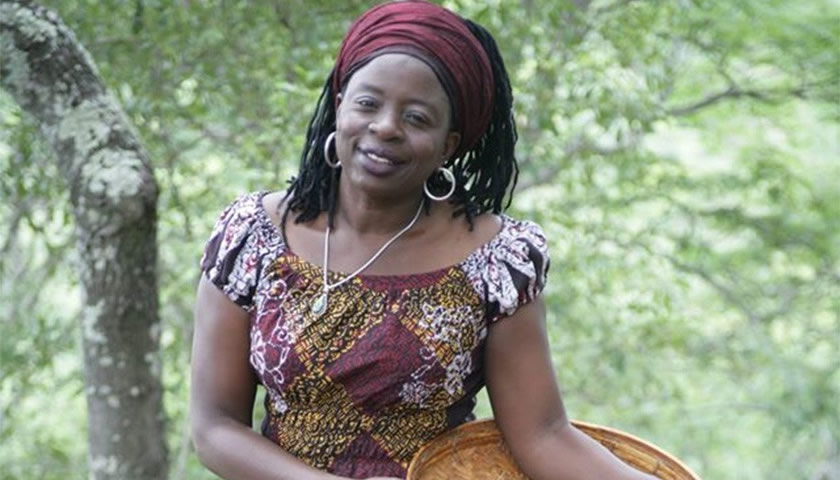The colonial cemetery, our troubled history
Sekai Nzenza
TODAY, I did not go into the busy Mupedzanhamo market with Piri and her business partner Chandi. Instead, I have taken a walk in the Mbare’s Pioneer Cemetery, which is just opposite the market. I am looking for moments of peace and history. In some countries, cemeteries are tourist attractions because monuments of silent graves tell the history of the people. Also, an old grave with writing helps complete details on a family tree.
Cemeteries are peaceful places.
I developed this interest in cemeteries a long time ago when I was in England. This interest grew even more when I was a student in Melbourne because there was a big cemetery with large tombstones near the university.
When I walked on the public path through the cemetery, I always stopped to read the diverse symbols, meaningful words and biblical verses engraved on the graves and tombstones.
Some tombstones had Jesus and Mary statues.
The Italian and Irish graves were among some of the most elaborate with expensive white marble.
Relatives and loved ones left imitation and real flowers on the graves and sometimes you saw an old Italian widow dressed in black kneeling at one grave, making the rosary signs over and over again.
She had that sorrowful look and the pain of losing a loved one.
In the USA, there is a place called Monrovia where I used to live. There the cemetery was only a few kilometres down Myrtle Road, past the rail tracks near where poor black people and Mexicans lived.
This cemetery was so peaceful with mostly plaques and names of people.
Real bodies were not buried here. Unlike us, some people prefer to burn their dead and bury the ashes. Here in the American cemetery, they burnt the bodies in a crematorium, collected the ashes, buried them and then placed a plaque to mark the grave. If we did the same to our people, the angry spirit of the deceased will haunt us forever, ngozi yacho haiperi. Cultures differ.
I am taking a slow meditative or perhaps reflective walk in between graves at the cemetery just off Remembrance Drive. No, I am not in this cemetery because I have a relative buried here nor am I searching for records to place on our family tree.
In my extended family, we have not developed a family tree. Even if we had done so, that family tree would be very short.
Most Africans who grew up in the colonial period like I did do not know where their great grandparents were buried. Tracking them would be near impossible because, in 1933, the Rhodesian government passed the Land Apportionment Act to say Africans should leave the land they lived on and move to the allocated Tribal Trust Lands.
So the Africans left the mounds of unmarked stone graves on their old ancestral land. They never went back to check the graves because there was a sign on the fenced farm to say, “Trespassers will be prosecuted.”
Today, our family trees would have to start with the graves of our grandparents and parents.
We can write now and make elaborate headstones made of marble, depending on the budget and levels of wealth or love.
We can also put photographs and meaningful verses on the tombstones even when our deceased relative did not go to church or believed in the Christian God. But an elaborate tombstone looks good for the next generation to visit and record the name on the family tree.
This cemetery in Mbare was built in the old colonial days, for white people only.
Before independence, we used to see the cemetery from the bus coming from the city to Mbare. Occasionally we saw Europeans in small gatherings, burying their dead.
This cemetery was both scary and sacred, pavaitonga havo, paityisa nekuyera pano. In those days, the cemetery looked beautiful and peaceful from afar, with green lawns and flowers. But not anymore. Some of the graves have been desecrated or fallen into disrepair due to age and there is rubbish here and there.
Across the road from the cemetery is Mupedzanhamo Flea Market where they are selling African arts and crafts, Chinese goods of all kinds and, of course, the second-hand clothes from overseas.
It is very noisy in there. People talking, shouting, laughing. Down past the lights are the Nenyere hostels. These flats were built for African bachelors who came from the villages to work in the industries and help build Rhodesia.
Their wives were not allowed to join them because the government said village women had no place in town. Our mothers stayed back in the village doing all the heavy work that the men used to do.
That is why those flats were bachelor-type rooms. These days, whole families are living in there. Sometimes two families share the one room and privacy is only a curtain between them.
Across the road from the cemetery on the eastern side is an open space where people are selling everything from soft drinks, buns, and hair extensions, potatoes, tomatoes, and clothes, rolls of white and red Vapositori cloth.
All along the road to Rufaro Stadium there are people everywhere also selling anything that can be legally or illegally bought and sold.
Just past Nenyere Flats is the vibrant Siyaso Market where they say you can find everything from an old Mercedes-Benz engine to the leather strips for yoking cattle, zvitirobho.
Lately, Chandi told me that if you speak nicely to some people in the African artifacts section in Mupedzanhamo Market or even at Siyaso, you can buy fat live frogs, oiled and dressed up with beads and pieces of black and red cloths.
These frogs are used as zvikwambos or fetishes during witch hunts in the villages. Nobody will ever know that they are just innocent frogs picked from the Hunyani River bed or even from the cemetery grass.
The frogs are driven from one village to another in a cooler box, food and water supplied. If that frog miraculously finds its way into someone’s kraal or granary, the person is falsely accused of witchcraft.
He or she will pay a cow to the witch hunter and out of fear, that person will confess and then say sorry to everyone for disturbing village peace.
Sometimes you have to take what Chandi hears and repeat it with a pinch of salt.
Some people refer to this place as the Pioneer Cemetery. There is a visible presence of an era gone by. Amidst the busy and noisy pace of Mbare, this cemetery is just here, an open space with brown marble and cement graves.
We do not talk or refer to this place. It was a period in colonial history when the lives between black people and white people were very unequal, very separate and yet connected in many ways.
Each grave here speaks of the people who left their homes to come to Africa and then never returned. Each person buried here belongs to a family tree in England, Ireland, Scotland, and America, Italy or some place in Europe.
Among many other graves, there is one lone grave of a young woman called Susanna.
She was born in Bath, England, and died here, at Salisbury in 1916.
The writing says she died at the age of 20. She might have come here with the Pioneer Column. We do not know what disease killed her but we know that the male members of the Pioneer Column were involved in the First Chimurenga.
At the War Graves Plot, towards the Harare Cremation Memorial, there is information commemorating the members of the Royal Air Force, including 66 men of the Rhodesia Native Regiment and British South Africa Police.
There are several white crosses to commemorate the 27 Commonwealth burials of the 1914-1918 First World War and 224 burials of the 1939-1945 Second World War.
I stand here and wonder if my uncle, Sekuru VaBhunu, who had died serving the King in the First World War, would have been remembered here.
Luckily he did not die. He came home and wore his native uniform proudly on special occasions, for many years.
The gravestones in colonial cemeteries record names and dates of death.
Each one of the tombstones has decorative symbols and selected memories carved in stone.
These graves speak of the European people who came here and died here.
Their ancestral spirits are wandering in this foreign place they now call home. The places of their births are so far away, perhaps forgotten by their relatives and only remembered on the family tree as the uncle who went to Rhodesia to seek his fortune and never came back.
The graves can help us remember what is forgotten. They represent competing memories of our colonial past.
We do not want to talk about the painful past or the pain suffered by our parents or grandparents, siblings and relatives during the world wars or during the time when this cemetery was built.
Distancing it erases it from our memory. We struggle to articulate generational memory because the events remind us of the times of chibharo, forced labour and police raids of women visiting their husbands in the bachelor flats.
We struggle to transform these contested sites into what becomes of our heritage.
So what then do we do with the memories of empire embedded in the colonial graves and tombstones? Because we cannot deny some painful aspects of the past, there is a reluctance to write or talk about it.
And yet cemeteries are a source of history, helping to fill in the gaps in family trees.
With the uses of modern technology, we can trace the names on these graves and find out more about Rhodesia and how European lives were problematically interconnected to ours.
This memorial site of bereavement may not seem relevant to the masses of people busy buying, selling, shouting, laughing or quietly breast-feeding babies under a jacaranda tree, watching the busy trucks, cars and kombis go by.
At Harare Mbare cemetery, we have a rundown and decaying colonial European graveyard in need of conservation.
These graves are a vehicle of cultural and historical memory shaping our shared past experiences.
Our own history, however painful it might be, is interconnected to the Europeans who lie there listening to the many voices of African life, hardship and laughter.
Dr Sekai Nzenza is a writer and cultural critic. She holds a PhD in International Relations and works as a development consultant.









Comments